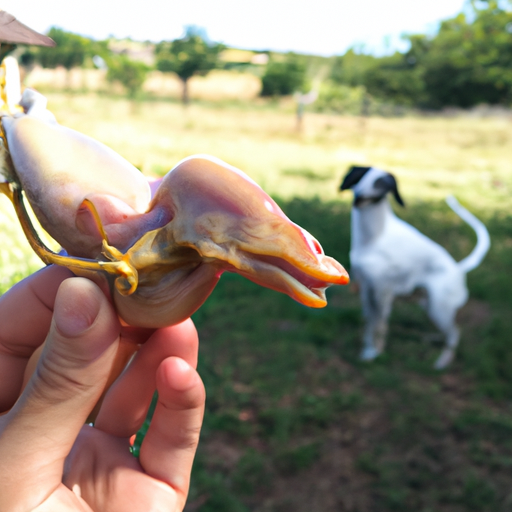As a caregiver to your furry friend, you know that their diet is key to their health and happiness. You may be considering incorporating raw or cooked chicken necks into your dog’s diet. This guide will provide you with detailed insight on the best ways to prepare chicken necks for your dog, and answer common questions you may have about this type of food.
Why Feed Your Dog Chicken Necks?
Chicken necks are a rich source of protein, calcium, and glucosamine, which can contribute to your dog’s overall health. They can help to maintain your dog’s teeth and gums, improve their coat condition, and support their joint health.
Nutritional Value
Here’s a quick overview of the nutritional value found in chicken necks:
| Nutrient | Amount per 100g |
|---|---|
| Protein | 19g |
| Fat | 5g |
| Calcium | 1.5g |
| Phosphorus | 1.3g |
Chicken necks also contain trace amounts of other essential nutrients such as iron, zinc, and vitamin B.
Choosing the Right Chicken Necks
When selecting chicken necks for your dog, you want to ensure they are fresh and free of any harmful bacteria. Here are a few tips to help you select the best chicken necks:
- Purchase from reputable sources: Buy your chicken necks from a trusted butcher or pet food store to ensure they are fresh and safe for consumption.
- Look for freshness: The chicken necks should have a pleasant smell and not be slimy to the touch.
- Size matters: If your dog is small, look for chicken necks that are appropriately sized for their mouth and digestive system.
Safely Preparing Chicken Necks
There are two main ways to prepare chicken necks for your dog: raw or cooked. Each method has its pros and cons which we’ll discuss in detail.
Raw Chicken Necks
Feeding your dog raw chicken necks can have several benefits, including providing them with natural enzymes and nutrients that can be lost during cooking. However, there are safety precautions to keep in mind:
- Always freeze the chicken necks for at least 72 hours before feeding to kill any parasites.
- Thoroughly wash your hands and any surfaces that the raw chicken necks come into contact with to prevent the spread of bacteria.
Cooked Chicken Necks
Cooking chicken necks can make them safer to eat by killing any bacteria present. However, you should never serve cooked chicken necks with bones as they can splinter and pose a choking hazard. Here’s how to safely cook chicken necks:
- Boil the chicken necks in a pot of water for 15-20 minutes until fully cooked.
- Let them cool and remove any bones before serving to your dog.
Serving Chicken Necks to Your Dog
Chicken necks can be served as a meal or a treat. If serving as a meal, they should make up no more than 50% of your dog’s diet. Always monitor your dog while they’re eating chicken necks, especially if they’re new to this type of food, to ensure they’re chewing them properly and not choking.
FAQs
Can all dogs eat chicken necks?
Most dogs can benefit from eating chicken necks, regardless of their size or breed. However, always consult with your vet before introducing new foods into your dog’s diet.
Are there any risks to feeding my dog chicken necks?
There can be risks if safety precautions aren’t taken. Raw chicken necks can carry bacteria like Salmonella, and cooked chicken neck bones can splinter and cause choking or digestive blockages.
How often should I feed my dog chicken necks?
This can vary depending on your dog’s size, breed, and overall diet. As a general guideline, chicken necks can be fed 1-2 times per week.
Can I feed my dog chicken necks if they’re on a special diet?
Consult with your vet before introducing chicken necks into your dog’s diet, especially if they’re on a special diet for health reasons.
By following these guidelines, you can safely prepare chicken necks for your dog and provide them with a nutritious and enjoyable addition to their diet.



